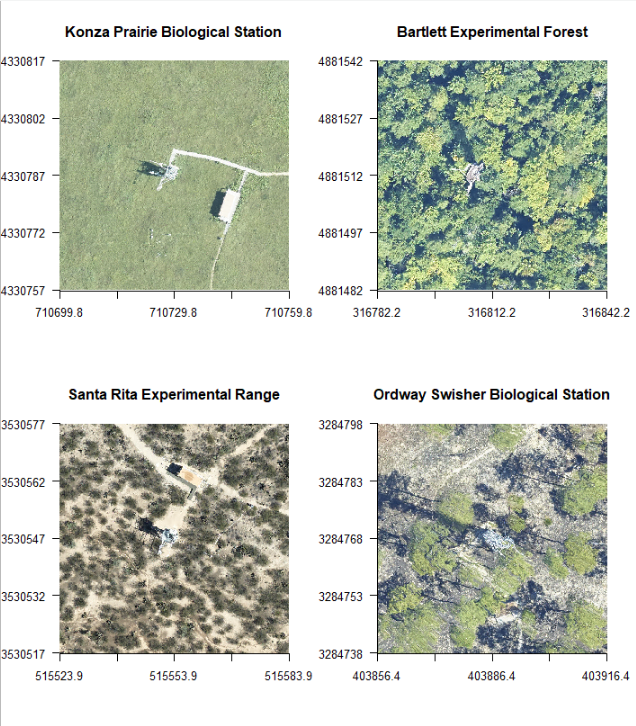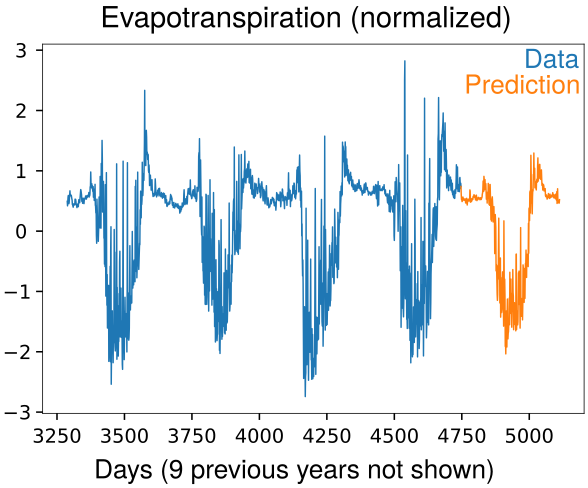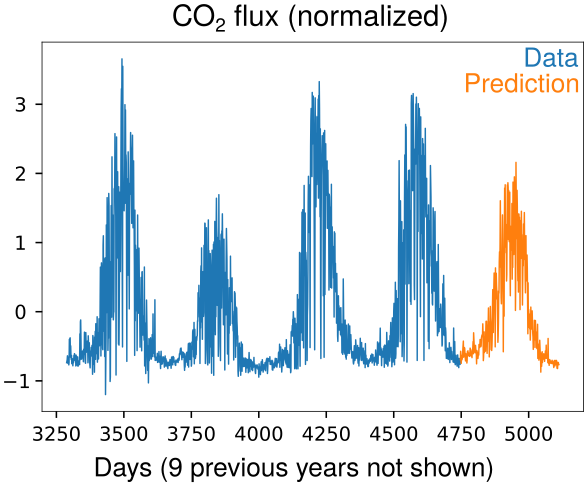Terrestrial Carbon & Water Fluxes
The Challenge
We are joining the challenge on predicting ecosystem fluxes (carbon and water) organized by the Ecological Forecasting Initiative
The goal of that challenge is “to learn more about the predictability of ecological processes […]. What modeling frameworks, mechanistic processes, and statistical approaches best capture community, population, and ecosystem dynamics?”
To do so, we are using data collected by NEON at measurement towers on four sites, shown below. These measures can be completed by weather models. The announced goal of the challenge is to build comprehensive models for the exchanges of water and carbon from these ecosystems. The broader goal is to encourage multi-disciplinary research on these issues.

Image from the EFI terrestrial challenge
Main participants
- Nicolas Brodu: Modeling and inference, signal analysis, computational mechanics
- Adam Rupe: Modeling and inference, HPC, computational mechanics
- Yao Liu: Plant and ecosystem ecology, ecological modeling
- Geano Dong: Physical soil science, hydrology, complexity sciences
Our contribution (preliminary results)
This challenge is a multi-years effort, during which we aim to build models of the ecosystem dynamics, considered at global level. Our approach is based on computational mechanics ideas, where we try to identify the internal “states” of the process and how they evolve through time. These states can be seen as dynamical states in a space comprised of the main descriptive parameters for the system dynamics. This allows us to reconstruct attractors and make predictions along their trajectories. Preliminary results, using Ameriflux data near one of the NEON sites, are already encouraging:
Representation of the process attractor for the Bartlett site, in the 3 main dimensions of the causal states space. The colors indicate the time of year. The black curve shows predicted states. The image is dynamic and you can navigate through the structure.
Our method allows to seemlessly merge heterogenous data, in this case Temperature, Solar energy influx, Precipitations, Soil water content, Evapotranspiration and CO₂ exchanges. A unique system state accounts for all the data. The trajectories of these states, in this case, form an attractor. The seasonal cycle and phenology is clearly visible and separates the two main lobes of the attractor. Using that unique system state, predictions can then be made for each dependent variable. These predictions thus account for all measured data, coming from all the sources:


Current challenges we need to solve are the handling of missing values, together with data assimilation from weather forecasts models. This requires both theoretical development on current methods, together with practical engineering that needs to be done before making large-scale predictions.
